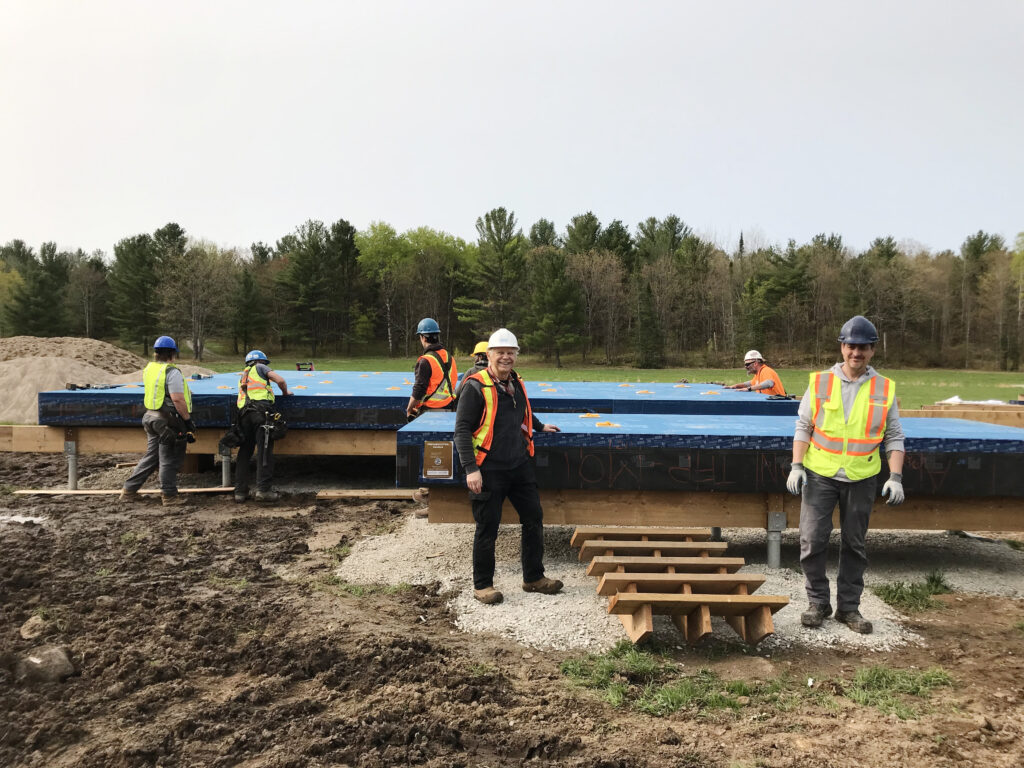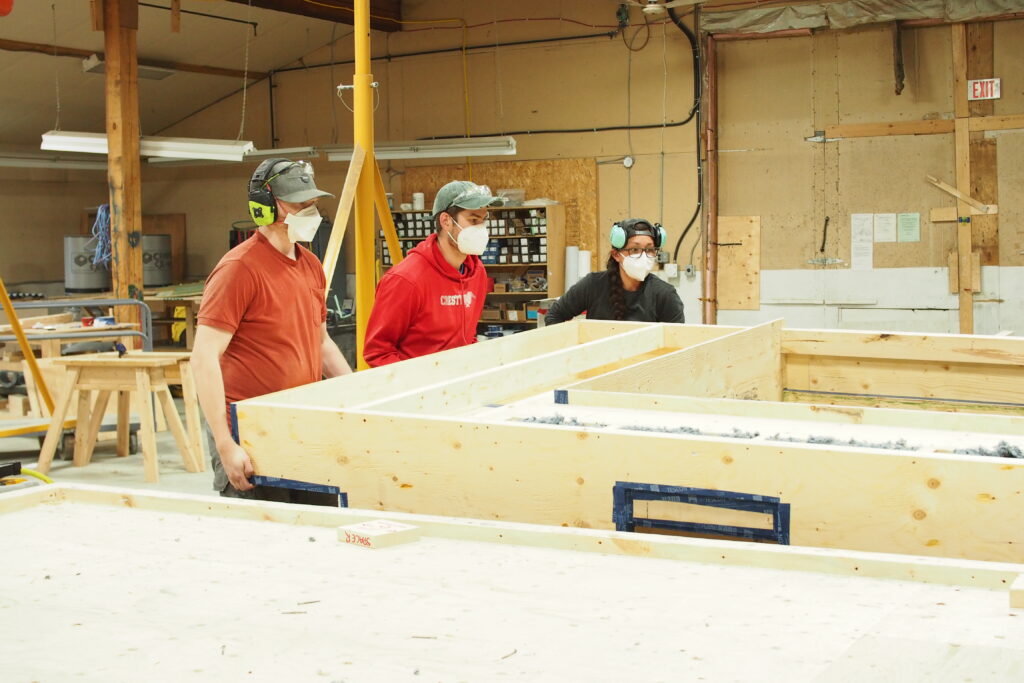Tooketree Passive Homes
Future-focused, Net-Zero Qualified builder produces ultra-energy-efficient, carbon-storing homes from natural materials.
A small company in the village of Baysville, Ontario is aiming to make a big change to the way we think about building construction. The team at Tooketree Passive Homes builds highly-efficient, health-conscious homes using a variety of carbon-sequestering natural materials. Founded in 2018, Tooketree pre-fabricates CSA-certified panels that can be custom-built for nearly any aesthetic or design. The young, climate-focused company was dreamt up and made reality by Melinda Zytaruk, General Manager of natural-building worker cooperative, The Fourth Pig, and her father, twice-retired business strategist, Rick Zytaruk.
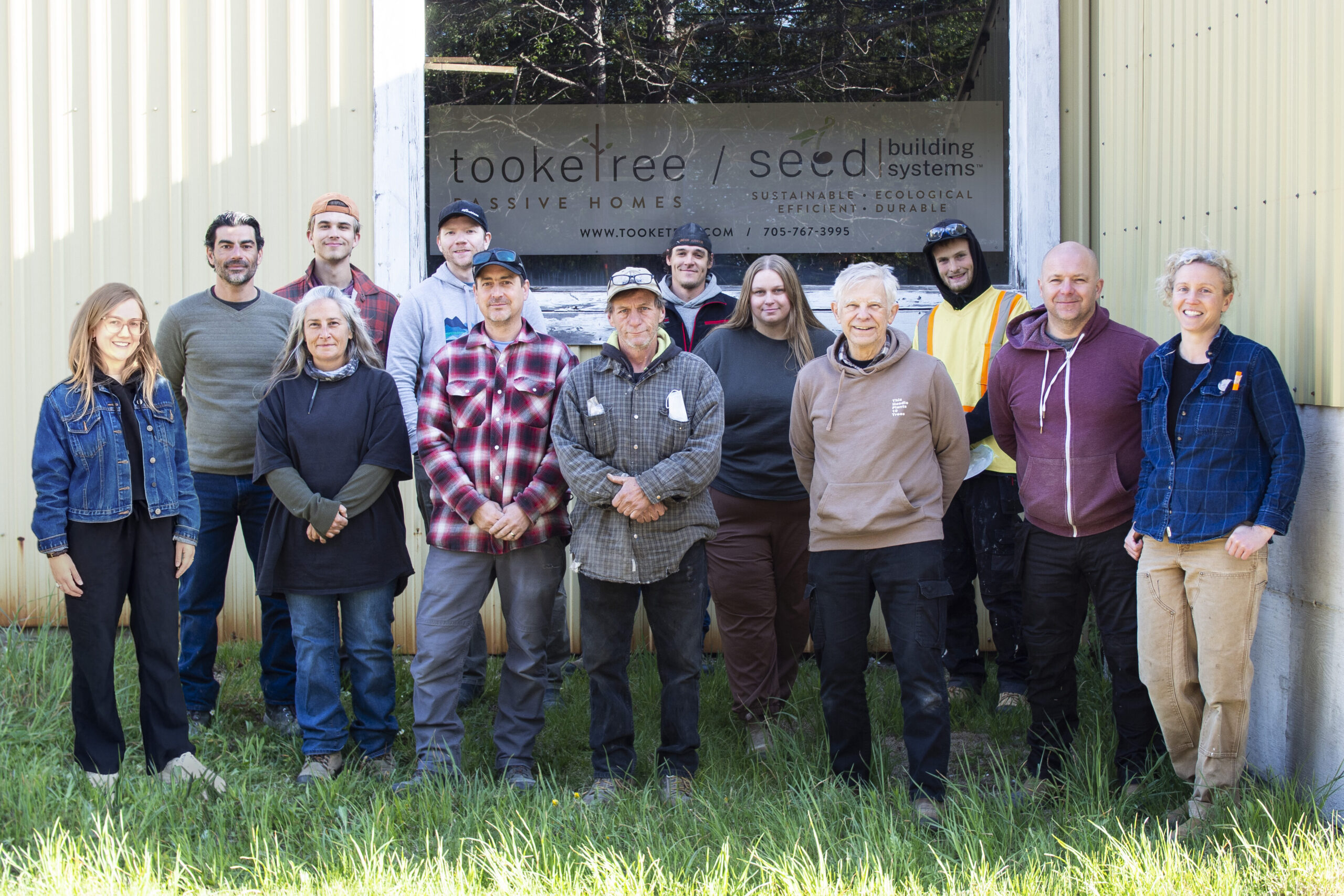
Motivated by his desire to leave a safe planet to his four grandchildren, and inspired by his daughter who had been constructing and advocating for green and natural buildings for a decade, Rick exited retirement in his seventies to take on a more-than-full-time leadership role at Tooketree. The former Consulting Partner at IBM wanted to change the construction industry for the better and demonstrate that our homes and buildings can be energy efficient, non-toxic, and can store carbon to combat climate change.
Here’s why
The United Nations tells us that our buildings are heavy emitters, responsible for over a third of CO2 emissions globally. In twenty-twenty-one, according to the U.N., buildings around the world – in use and under construction – emitted around 10,000,000,000 tons (10 Gigatons) of CO2. Our homes and the places we work, shop, eat, gather, and access health and social services are causing climate change. Emissions happen in a variety of ways, from the manufacturing of the buildings’ materials and the carbon emitted during construction, to the energy used — often directly from oil and gas — to heat, cool, and power a building. These emissions can be higher or lower depending on how a building is made, what it’s made of, and what powers it.
Increasing energy prices and climate awareness have led many in the building industry to focus on efficiency. More insulation and fewer air leaks have become the standard for what is often called sustainable building. However, many conventional building materials are doing more harm than good. Popular insulation options are often petroleum-based; others are products of highly energy-intensive manufacturing processes. For example, mineral wool which is often marketed as natural, requires rock to be heated up to a molten state and spun like cotton candy. The petrochemicals that create spray foam and rigid polystyrene are non-biodegradable, highly flammable, and have the potential to off-gas harmful chemicals into the environment and the air we breathe. Yes, you can build a highly efficient home with these products, but no future energy savings will ever make up for the damage caused in the manufacturing and construction processes, not to mention the eventual disposal of these materials.
So, what does sustainable building look like? Is it even possible?
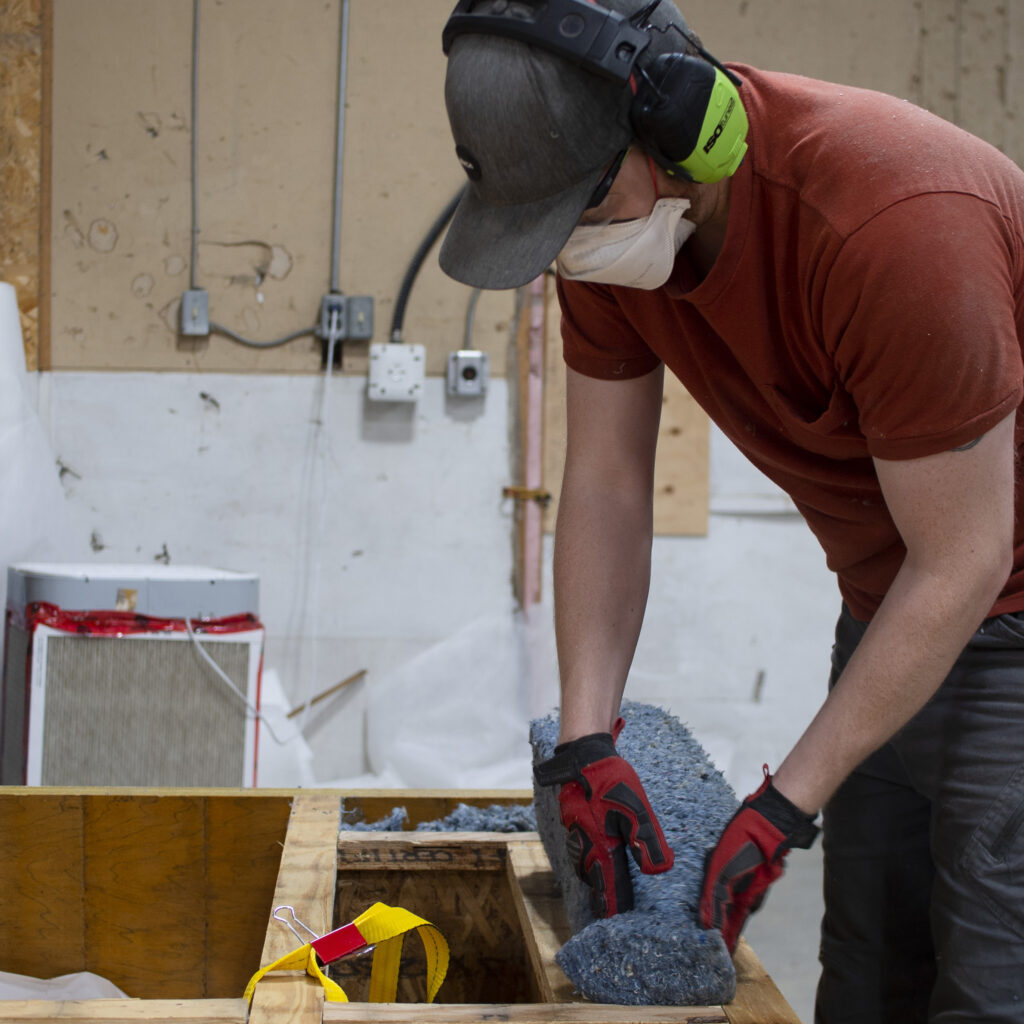
The team at Tooketree wants to show us that it is. Tooketree’s S.E.E.D (Sustainable, Ecological, Efficient, Durable) panels are fabricated from wood and ecologically-responsible insulation products like blown-in cellulose, made primarily from recycled newspaper; denim batts made from recycled fabric and salvaged garment factory scraps; and recycled wood fibre board. The benefits go beyond diverting useful materials from the landfill; cellulose, cotton and wood fibre are plant-based materials, originally born from photosynthesis – nature’s perfect system for capturing atmospheric carbon and storing it in plant matter. Dry plant matter is about half carbon; carbon that previously hung out in the atmosphere as part of the carbon dioxide molecule. When we find ways to store and preserve carbon-rich plant matter, in the walls, floors and roofs of our homes for instance, instead of allowing it to decompose in a landfill, we prevent carbon from re-entering the atmosphere. Tooketree’s commitment to natural, carbon-sequestering materials is what makes the company a leader in environmentally sustainable buildings and sets it apart from others that claim a green brand. The Zytaruks’ hope is that other builders will be inspired to follow suit.
Tooketree’s commitment to ecological building can be found in the details too; the company’s builders push sheep’s wool into tight and awkward spaces, and stick with the most environmentally-friendly, non-toxic adhesives on the market. High-end, high-performance moisture, air and vapour barriers protect the integrity of the structure and regulate moisture levels and temperatures within the walls and interior of the building.
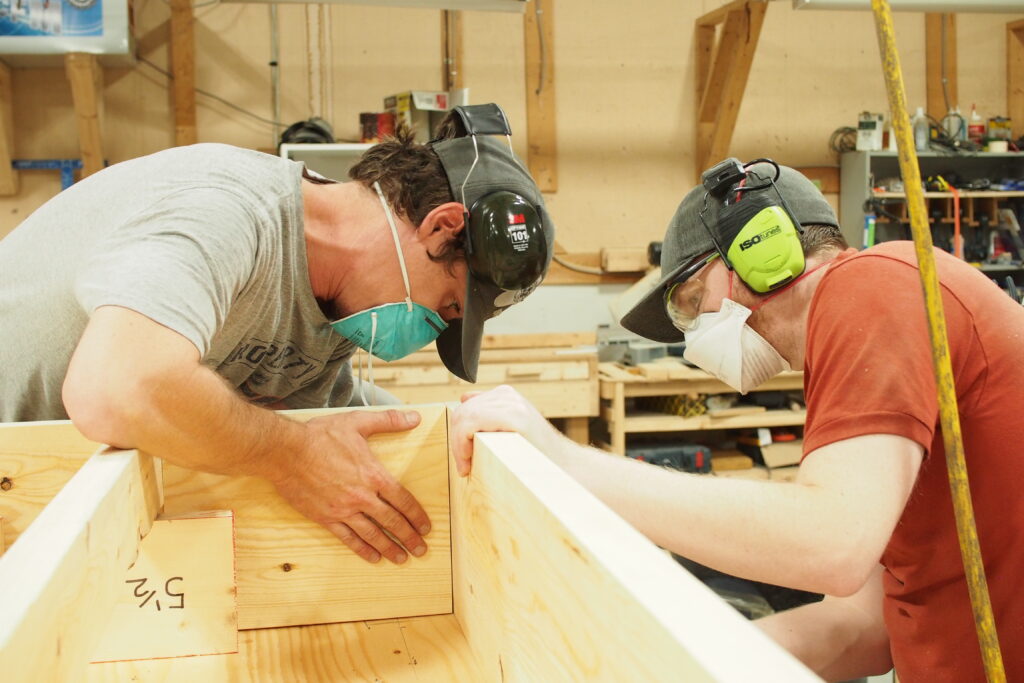
To keep construction waste to a minimum, a computerized numerical control (CNC) machine, loaded with data from the design program, cuts the majority of the dimensional lumber, saving time and preventing miscuts.
Recently, Tooketree was designated a Qualified Net-Zero Builder by the Canadian Home Builders Association. The label, awarded proceeding a rigorous investigation process, indicates that the efficiency of the finished home is significantly better than a new conventional build and is enough that the home can be heated, cooled and powered with renewable energy created on-site. While it’s an exciting and well-deserved accreditation for the business and its forward-thinking partners, the homes built by Tooketree are more innovative than this label implies. While the team celebrates the designation, they also demonstrate that much more can be done, largely through the mindful use of natural materials.
There’s more!
Exciting things are on the horizon for Tooketree Passive Homes. In 2022 the company joined forces with a Northern Ontario Indigenous women’s group that, among many things, connects Indigenous women to skilled trades learning opportunities. The group has its sights set on establishing a S.E.E.D. panel manufacturing factory in Northern Ontario; women who participate in training at Tooketree may end up leading the way at the new, state-of-the-art factory.
Tooketree has also been involved in ongoing research that looks at producing structural building materials using mycelium as a binding agent, propagated over a hemp or natural fibre substrate. Finding an alternative to the petroleum-based adhesives that are so far nearly unavoidable in modern construction, is an area of deep interest to the Tooketree team.
Tooketree is also a living wage employer that promotes a healthy, safe and positive work culture for its employees, in addition to providing meaningful, climate-focused work.
Among other memberships and accreditations, Rick Zytaruk is a member of (and spokesperson for) Builders for Climate Action. The organization has developed an easy-to-use tool for assessing the carbon footprint of a project’s building materials and understanding the best ways to reduce climate impact. The BEAM (Building Emissions Accounting for Materials) estimator tool lets users input building dimensions and provides the carbon footprint of all the material options for that building in a simple and comparative format.
Melinda Zytaruk co-founded The Fourth Pig Worker Co-op in 2007 and continues to act as General Manager and Director of Business Services. The Fourth Pig frequently collaborates on builds with Tooketree Passive Homes. (More on The Fourth Pig in a future post.) Melinda is the founding president of the Lake of Bays Renewable Energy Co-operative, a not-for-profit organization building renewable energy facilities in Lake of Bays, Ontario to benefit the local community and the greater environment. A frequent presenter on sustainable construction and communities, Melinda is a founding and former board member of Passive Buildings Canada, a member of the Muskoka housing task force and a founding board member of the Muskoka Community Land Trust.
There has been a slow shift happening in building design in North America, carried forward with help from standardizing organizations like L.E.E.D. and the Passive House movement. Forward-thinking companies are constructing high-performance, energy-efficient buildings. Yet it’s rare to find a builder that focuses on the health and ecological impacts of building materials and their embodied carbon. Talk of concepts like net zero and carbon sequestration is more common than it was a decade ago, but it takes inspired companies like Tooketree Passive Homes to walk the talk and turn these concepts into reality. The team at Tooketree Passive Homes has set out to properly define sustainability and to inspire and challenge the building industry to make ecological construction mainstream.
Find out more
Check out Tooketree’s website for more information.
Are you building, or planning a new build or renovation? Use the BEAM estimator tool to calculate your project’s carbon footprint and see your options for a greener, cleaner build.
Written by Bet Smith
Full disclosure: This feature was conceived years ago when Bet was a super-fan of Tooketree Passive Homes. Since then, Bet has become a builder with the company; a circumstance that provided much insight for this post.
